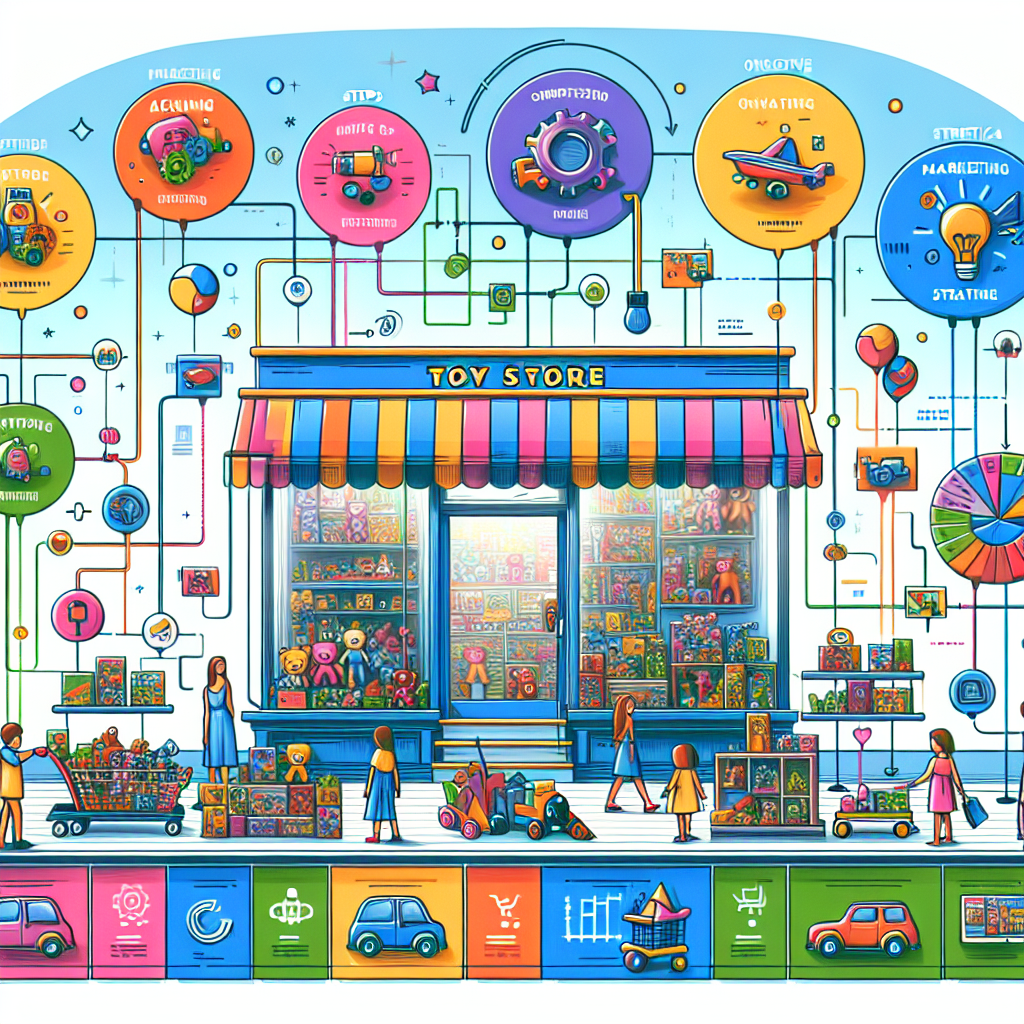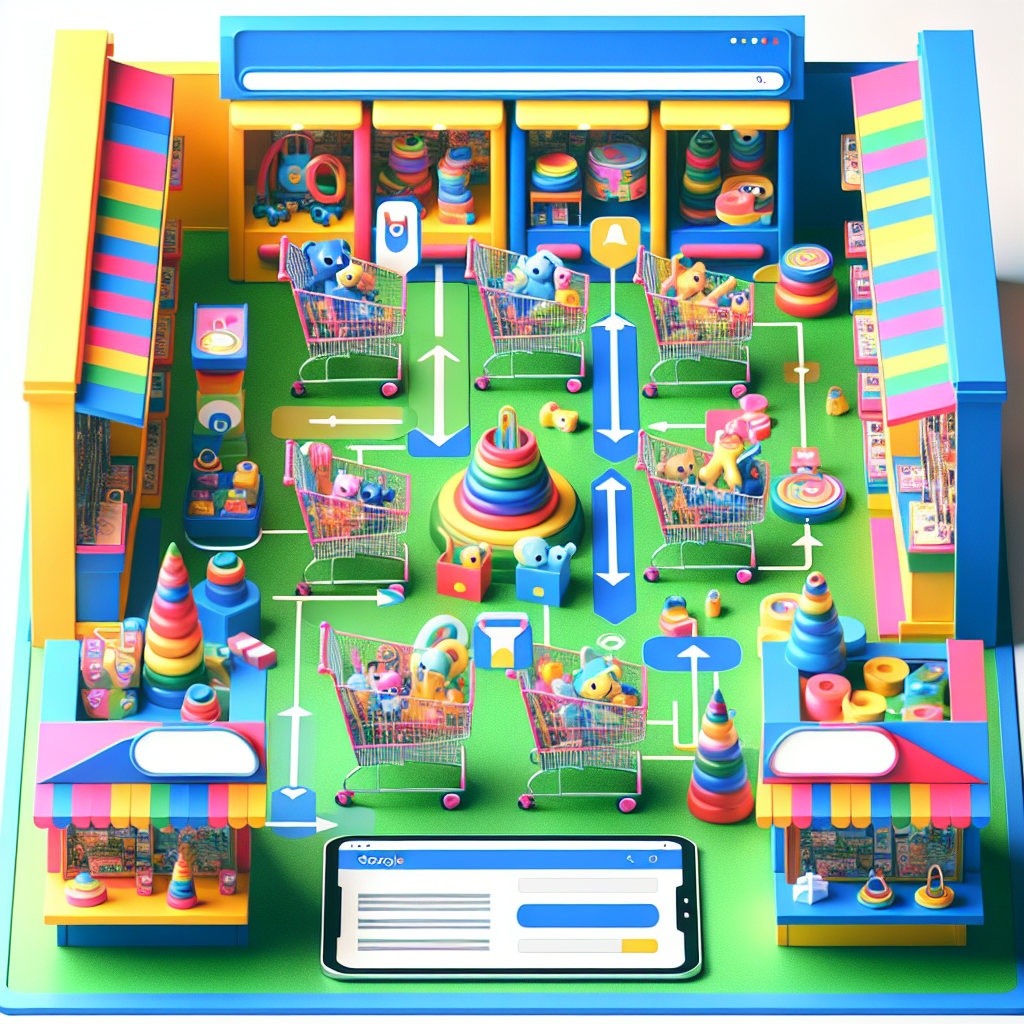If you’re looking to boost your toy store’s online presence and reach potential customers effectively, then Google Ads is the perfect tool for you. In this article, we will show you how to leverage Google Ads for toy store marketing, allowing you to target the right audience, increase brand visibility, and drive sales. With our expert tips and proven strategies, you’ll be able to navigate the complexities of paid search and maximize the benefits of using Google Ads to grow your toy store business.
Understanding Google Ads


1.1 What is Google Ads?
Google Ads, formerly known as Google AdWords, is an online advertising platform developed by Google. It allows businesses to create ads and display them to users when they search for relevant keywords on Google or browse websites within the Google Display Network. With Google Ads, businesses can reach a wide audience and increase their visibility, driving traffic to their websites or promoting specific products or services.
1.2 Why use Google Ads for toy store marketing?
Google Ads is an effective marketing tool for toy stores due to its targeting capabilities and wide reach. By using Google Ads, toy stores can specifically target potential customers who are already searching for toys or related products online. The platform offers various ad formats, including text ads, image ads, and video ads, enabling toy stores to showcase their products in a visually appealing and engaging way. Additionally, the precise targeting options and performance tracking features of Google Ads allow toy stores to measure their return on investment (ROI) and optimize their campaigns for better results.
Setting Up Your Google Ads Account
2.1 Creating a Google Ads account
To get started with Google Ads, you need to create a Google Ads account. Visit the Google Ads website and click on the “Start Now” button. You will need to provide some basic information about your toy store and set up your billing preferences. Once your account is created, you can start setting up campaigns and ads.
2.2 Defining your toy store marketing goals
Before creating your Google Ads campaigns, it is essential to define your marketing goals. Are you looking to increase online sales, drive more traffic to your physical store, or promote a specific product? By clearly defining your goals, you can tailor your ad campaigns to align with these objectives and measure their effectiveness accurately.
2.3 Understanding your target audience
Identifying and understanding your target audience is crucial when using Google Ads for toy store marketing. Who are your potential customers? What age group, interests, or demographics are you targeting? By understanding your target audience, you can craft compelling ads that resonate with them and ensure your campaigns are reaching the right people.
Researching Keywords for Toy Store Marketing
3.1 Conducting keyword research
Keyword research is a vital step in optimizing your Google Ads campaigns for toy store marketing. It involves identifying the relevant keywords and phrases that potential customers are using when searching for toys online. By conducting keyword research, you can discover the most valuable and high-performing keywords to target in your ads.


3.2 Using tools like Google Keyword Planner
To conduct keyword research effectively, you can utilize tools such as Google Keyword Planner. This tool allows you to explore search volume trends, discover new keyword ideas, and estimate the competition level for specific keywords. With Google Keyword Planner, you can refine your keyword list and ensure your ads are targeting the most relevant and valuable keywords for your toy store.
3.3 Finding relevant keywords for toy stores
When researching keywords for toy store marketing, it is crucial to focus on relevant terms that align with your products and target audience. Consider keywords such as “children’s toys,” “educational toys,” or specific toy names. Additionally, think about long-tail keywords, which are more specific and can attract highly targeted traffic. For example, “best toys for toddlers” or “eco-friendly toy store.”
Designing Effective Toy Store Ads
4.1 Choosing compelling ad headlines
The headline of your ad plays a crucial role in capturing the attention of potential customers. It should be compelling, concise, and relevant to the user’s search query. When designing ad headlines for your toy store, highlight unique selling points, such as special promotions, discounts, free shipping, or specific toy features. Experiment with different headlines and monitor their performance to identify the most effective ones.
4.2 Crafting persuasive ad copy
The ad copy, or the text that accompanies your ad, should be persuasive and clearly communicate the value of your toy store. Highlight the benefits of your products, and include a strong call-to-action to encourage users to click on your ad. Use language that resonates with your target audience and conveys the unique qualities of your toys.
4.3 Selecting eye-catching ad images
Visuals are important in attracting attention and generating interest in your toy store ads. Choose high-quality, eye-catching images that showcase your products and make them stand out from the competition. Consider including images of children playing with the toys or showcasing the features that make your products unique. Test different images to determine which ones generate the most engagement and clicks.
Implementing Targeting Strategies for Toy Store Ads
5.1 Geographic targeting
Geographic targeting allows you to show your ads to users in specific locations. For a toy store, it is essential to focus on targeting your ads to areas where your target audience is located. If you have a physical toy store, you can use geographic targeting to ensure your ads are only shown to people within a certain radius from your store. For online toy stores, you can target specific countries, regions, or cities where you want to promote your products.


5.2 Demographic targeting
Demographic targeting enables you to target your ads based on specific demographic characteristics of your target audience, such as age, gender, or household income. Toy stores can use demographic targeting to ensure their ads are reaching the right age groups and genders. For example, if you sell toys primarily for toddlers, you can narrow your targeting to parents with young children.
5.3 Device targeting
With device targeting, you can choose which devices your ads are displayed on, such as desktop computers, mobile devices, or tablets. Considering that many people now use mobile devices for online shopping, it is important to ensure your toy store ads are optimized for mobile devices. You can analyze your campaign data to determine which devices are generating the most conversions and adjust your device targeting accordingly.
Setting Up Toy Store Ad Campaigns
6.1 Choosing the right campaign type
Google Ads offers different campaign types, each serving a specific purpose. For toy store marketing, the most relevant campaign types may include Search Network campaigns, Display Network campaigns, or Shopping campaigns. Depending on your goals and targeting strategy, you can select the campaign type that aligns best with your objectives and budget.


6.2 Setting budget and bidding options
Setting a budget is an essential step in Google Ads campaign setup. Determine how much you are willing to spend on advertising each day or month. Consider factors such as competition, the potential return on investment, and your marketing goals when setting your budget. Additionally, choose the bidding options that suit your campaign objectives, whether it’s cost-per-click (CPC), cost-per-thousand-impressions (CPM), or cost-per-acquisition (CPA).
6.3 Creating ad groups and ad extensions
Ad groups are subdivisions within your campaigns that contain specific ad sets and keywords. It is recommended to create ad groups based on relevant themes or product categories to ensure your ads are highly relevant to users’ search queries. Additionally, consider utilizing ad extensions, such as sitelink extensions or call extensions, to provide additional information or call-to-action buttons in your ads. Ad extensions can enhance the visibility and performance of your toy store ads.
Optimizing Toy Store Ad Performance
7.1 Monitoring ad performance metrics
Regularly monitoring the performance of your toy store ads is crucial for optimizing their performance. Google Ads provides various performance metrics to track, such as click-through rate, conversion rate, average position, and cost per click. Analyze these metrics to identify areas for improvement and make data-driven decisions to enhance the performance of your ads.
7.2 A/B testing different ad variations
A/B testing involves running multiple versions of your ads simultaneously to compare their performance and determine the most effective variations. Test different headlines, ad copy, images, or call-to-actions to see which combinations generate the highest click-through rates and conversions. Continuously refine your ads based on the results of A/B testing to improve their effectiveness.
7.3 Adjusting bids and budgets based on performance
Based on the performance data of your toy store ads, you may need to adjust your bids and budgets. Increase your bids for high-performing keywords or ad placements to increase their visibility and drive more traffic. Conversely, decrease bids or reallocate budgets from underperforming ads or keywords to maximize ROI. Regular optimization of bids and budgets is essential for maintaining a competitive position in the Google Ads auction.
Tracking Toy Store Advertising ROI
8.1 Implementing conversion tracking
To track the ROI of your toy store advertising efforts accurately, you need to implement conversion tracking. Set up conversion actions in your Google Ads account to measure specific actions that users take on your website, such as making a purchase, signing up for a newsletter, or contacting your store. By tracking conversions, you can attribute them to your ads and determine the success of your campaigns.
8.2 Analyzing ROI and conversion data
Analyze the conversion data and ROI metrics to understand the effectiveness of your toy store ads. Calculate the return on ad spend (ROAS) by dividing the revenue generated from your ads by the advertising costs. Identify which campaigns, ad groups, or keywords are driving the highest ROI and focus your marketing efforts on those areas.
8.3 Optimizing campaigns based on ROI
Based on the ROI analysis, optimize your toy store ad campaigns to improve their profitability. Allocate more budget to high-performing campaigns or keywords, refine your targeting options to reach the most valuable audience, and continually test and refine your ads to enhance their conversion rates. The ongoing optimization based on ROI ensures that your toy store marketing efforts generate maximum returns.
Retargeting Strategies for Toy Store Marketing
9.1 Setting up remarketing lists
Remarketing allows you to reach potential customers who have already shown interest in your toy store. By setting up remarketing lists, you can show targeted ads to users who have visited your website or performed specific actions, such as adding items to their shopping cart. This strategy aims to bring back lost customers and increase conversions.
9.2 Creating targeted remarketing ads
When creating remarketing ads, consider the specific actions or products that users have interacted with on your website. Tailor your ads to remind them of the items they were interested in or offer incentives, such as discounts or free shipping, to encourage them to return and make a purchase. Use compelling visuals and persuasive copy to capture their attention and drive them back to your toy store.
9.3 Reaching potential customers who showed interest
With remarketing, you can reach potential customers who have already shown interest in your toy store and increase the chances of converting them into customers. By staying top-of-mind through targeted ads, you can remind users of the products they viewed or introduce them to new offerings. Use audience segmentation and dynamic remarketing to deliver personalized ads that are most relevant to each user’s preferences.
Measuring Success and Improving Toy Store Marketing
10.1 Evaluating campaign performance
Continuously evaluate the performance of your toy store marketing campaigns to measure their success. Monitor the key metrics, such as impressions, clicks, conversions, and ROI, to identify areas of improvement. Compare the performance of different campaigns, ad groups, or keywords to determine the most effective strategies.
10.2 Continuous improvement and experimentation
To improve your toy store marketing, embrace a culture of continuous improvement and experimentation. Test different ad formats, targeting options, or landing page designs to identify what resonates best with your target audience. Monitor the results of your experiments and implement the learnings to refine your campaigns and maximize their impact.
10.3 Leveraging data-driven insights
Data-driven insights are essential in optimizing your toy store marketing efforts. Analyze the data collected from your campaigns to understand user behavior, preferences, and trends. Leverage these insights to make informed decisions about your ad campaigns, such as adjusting targeting parameters, ad content, or bidding strategies, to better align with your audience’s needs and increase the effectiveness of your marketing tactics.
In conclusion, Google Ads is a powerful tool for toy store marketing, offering precise targeting options, performance tracking features, and the ability to reach a wide audience. By understanding how to set up and optimize Google Ads campaigns, conducting keyword research, designing compelling ads, implementing targeting strategies, tracking conversions, and continuously improving your marketing efforts, you can drive traffic, increase sales, and successfully promote your toy store online.

